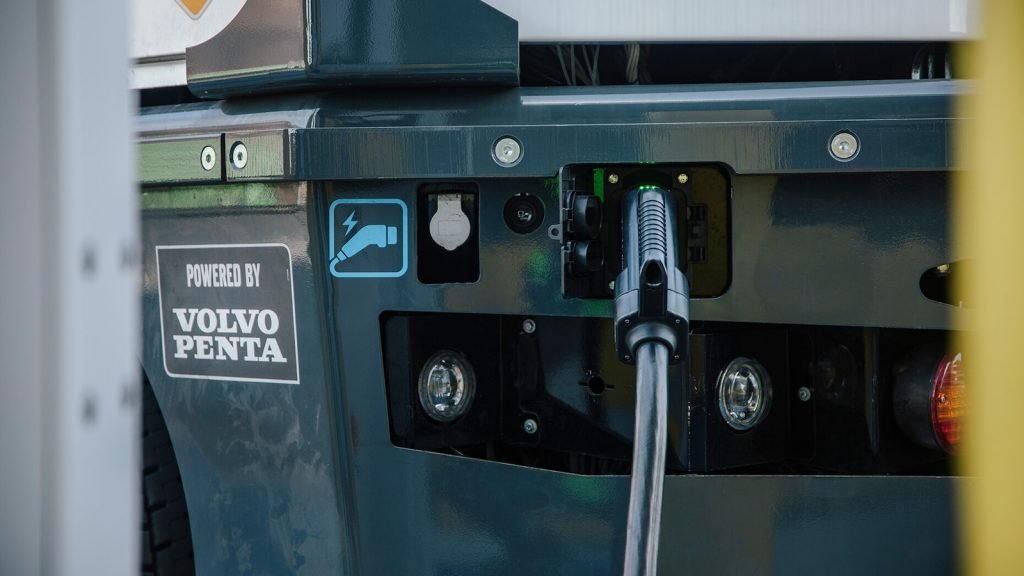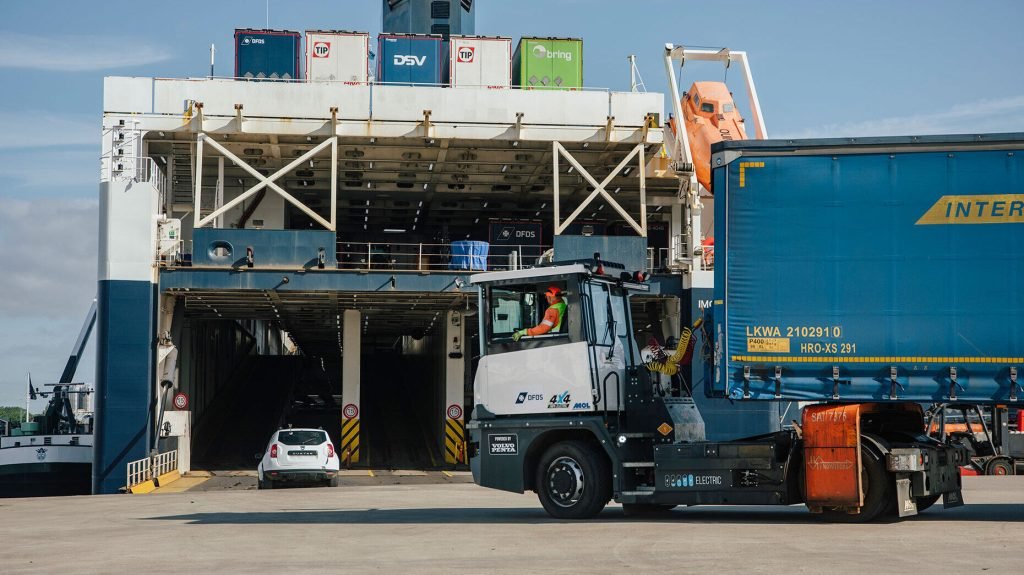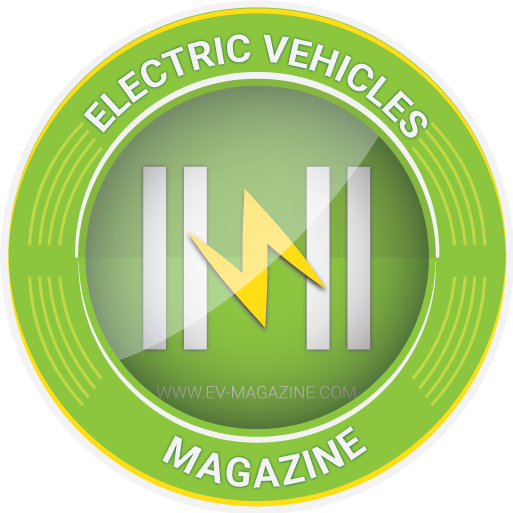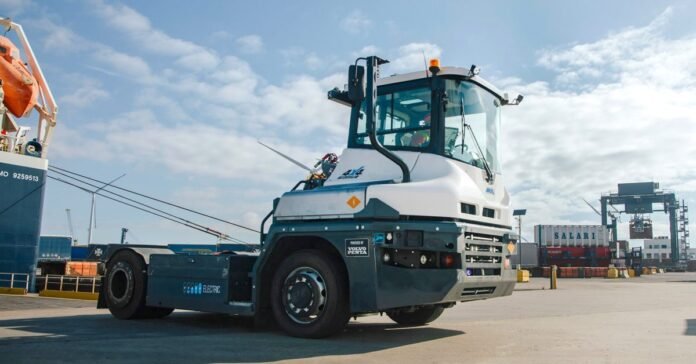



Volvo Penta has teamed up with the port equipment experts at MOL to develop a forward-looking, 4×4 electric RoRo at the Port of Ghent. It’s news exciting enough to make this reporter ask: what is a RoRo truck?
“RoRo” is an affectionate term for a “roll-on, roll-off” terminal truck. Primarily used at shipping terminals, logistics centers, or rail yards, these vehicles are typically torquey, powerful Class 8 tractors that are purpose-built to handle extreme payloads in all weather conditions, plus the consistent high g-forces associated with hitching up to a heavy trailer up to 100 times in a single shift. Oh– and they have to do that over several shifts per day.
Sometimes yard dogs, yard hostlers, or terminal trucks, these vehicles are a perfect use case for low-maintenance, high-torque electric motors – and this latest one from MOL and Volvo might be even perfect-er, thanks to a 4WD powertrain that gives the truck extra traction on the potentially wet, slippery ramps in an around the Port of Ghent, a strategic European shipping hub.
“The technical progress achieved through our collaboration with Volvo Penta in creating the full electric 4×4 RME225 terminal tractor demonstrates our efforts to expand our range of new emission-free vehicles specifically for the rigorous needs of heavy-duty port equipment,” says Conrad Verplancke, a sales engineer from MOL. “We’re ensuring that it performs reliably, efficiently, and effectively in real-life operational scenarios.”
The truck itself features a fully electric Volvo Penta driveline consisting of three battery packs totaling 270 kWh of installed energy, an EPT802 gearbox, and two, 200 kW drive motors (one on each axle). A separate, 50 kW motor powers the truck’s hydraulic systems and fifth wheel.
Also: CCS DC fast charging

Volvo Penta‘s close ties with Volvo Trucks, CE, and Volvo Cars means that these RoRos have access to those companies’ charging tech. As such, the new MOL-developed tractors have access to both L2 and DCFC though the CCS standard.
That ability to offer a single type of charger that can serve not just the terminal tractors, but any other Volvo equipment and vehicles that happen to be around the port means greater parts standardization and fleet integration for fleet managers who are trying to future-proof their site’s infrastructure needs for the next five, ten, or more years. That means lower costs and, presumably, higher uptimes.
“The value of electrification extends beyond the initial technology investment,” explains Jeroen Overvelde, area sales manager at Volvo Penta. “The full electric tractor matches its diesel counterparts in performance, with potentially higher acceleration rates and available torque on the RME225. Success hinges on delivering superior performance and optimizing total cost of ownership.”
Electrek’s Take

Terminal tractors really are an ideal application for electrification, and companies like DHL favorite Orange EV have spent more than a decade proving that in the marketplace. And, while Orange may have a head start in the EV space, there’s no question that these 4×4 yard dogs from Volvo could prove to be some real competition if they ever come stateside.
That said, competition typically improves the breed, and more electrification at America’s ports is only going to mean better working and living conditions for the people who work and live near those ports. As such, new entries into this space can only be a good thing for consumers.
We recently had a chance to interview Orange EV founder, Kurt Neutgens, on the Heavy Equipment Podcast, where he explained the benefits of BEVs in ports and terminals with a lot more eloquence and aplomb than I could. Give that a listen, below, then head down to the comments section at the bottom of the page to let us know what you think of Volvo entering the RoRo market.
SOURCE | IMAGES: Volvo Penta.
FTC: We use income earning auto affiliate links. More.

Source link
#Volvo #Penta #MOL #team #4WD #electric #RoRo #trucks






